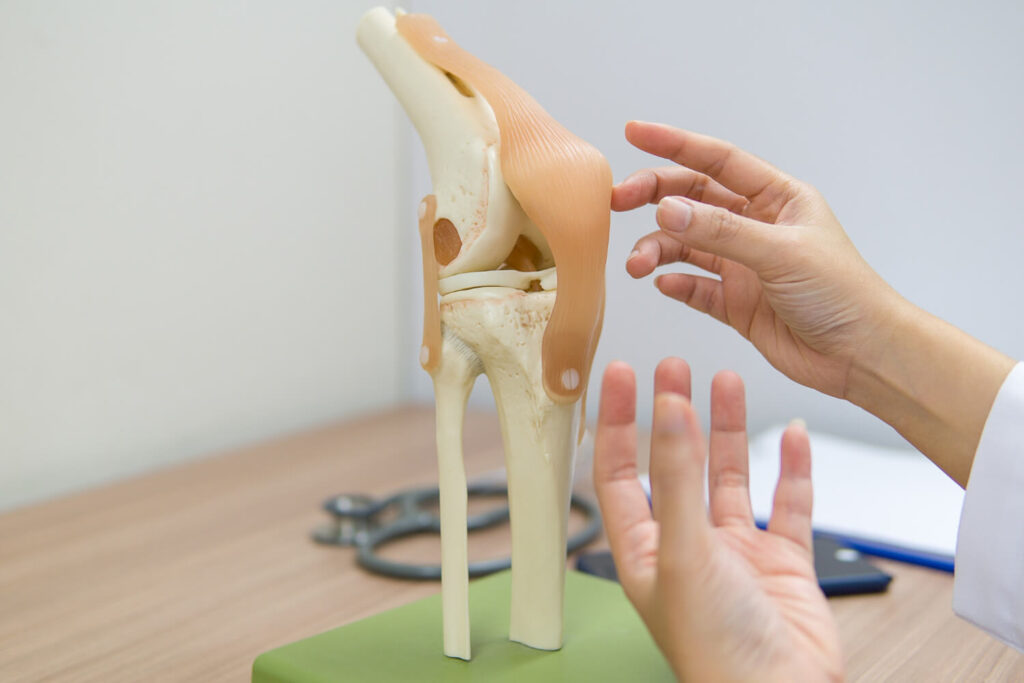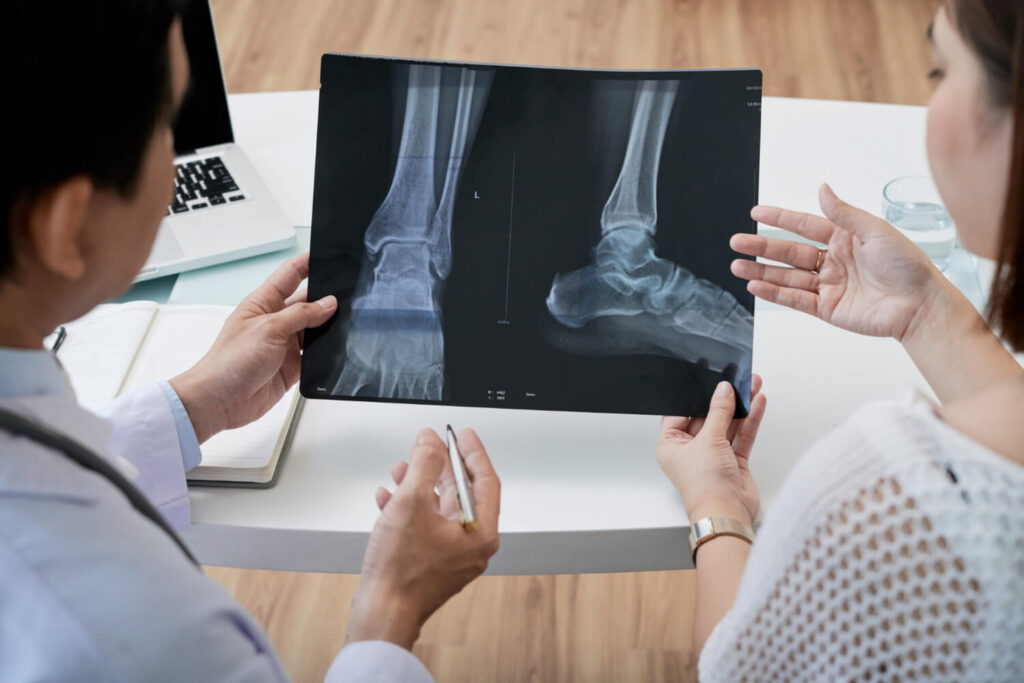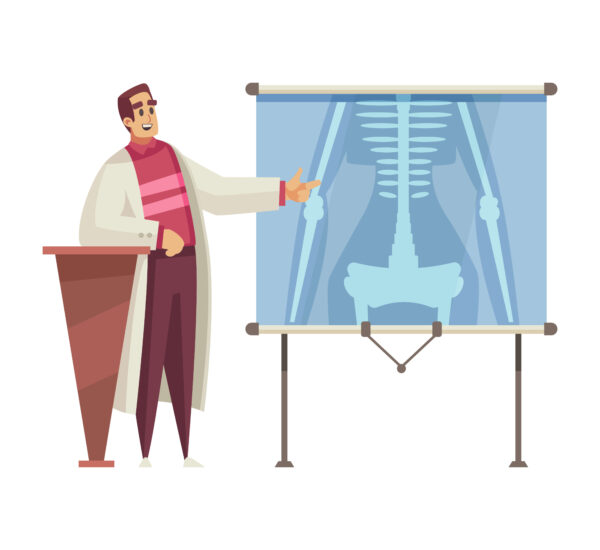Managing overall health can only happen if every aspect of one’s body is functional and out of possible threats. Although realistically, that can’t happen often as part of aging includes a series of conditions that people develop. One of them is osteoporosis, which can leave patients in pain due to fractures in the bone. That’s why knowing the possible osteoporosis treatment is essential for patients to successfully manage their health.
In this blog, we aim to provide the possible form of treatments that health providers can prescribe to patients. Take note that every individual doesn’t have the same diagnosis as some forms of osteoporosis can be severe while others are in the early stage. That’s why it is essential to listen and follow the tailored treatment provided to ensure recovery. Let’s begin!
Understanding Osteoporosis

Osteoporosis is a condition that affects bone health, leading to an increased risk of fractures. It occurs when the bones lose minerals like calcium more quickly than they can be replaced, resulting in low bone density. Bone health is crucial for overall well-being, as bones provide support and protection to the body.
The importance of bone health cannot be overstated, as osteoporosis can lead to fractures that can significantly impact a person’s quality of life. Understanding the definition and importance of osteoporosis is the first step towards effective treatment and prevention.
Factors and Diagnosis
Risk Factors of Osteoporosis

There are several risk factors for developing osteoporosis. These factors contribute to the development of osteoporosis as they affect bone health. Although, it is important to note that this condition naturally occurs due to porous bones. It is known that peak bone mass is typically achieved by the age of 25-30. So it is essential to build strong bones during childhood and adolescence through a combination of good nutrition and regular exercise.
To ensure a strong bone health, you might want to check the following factors, which can lead to the development of osteoporosis. Some of the main factors include:
- Age: The risk of osteoporosis increases with age, especially after menopause in women.
- Gender: Women are more likely to develop osteoporosis than men.
- Family history: Having a parent or sibling with osteoporosis increases the risk.
- Hormonal changes: Reduced estrogen levels in women after menopause and low testosterone levels in men can contribute to bone loss.
- Low body weight: People with a small frame or low body weight have a higher risk.
- Lifestyle factors: Lack of physical activity, poor nutrition, smoking, and excessive alcohol consumption can increase the risk.
Diagnosing Osteoporosis
When diagnosing osteoporosis is typically done through a bone density test, also known as a bone mineral density (BMD) test. This test measures the amount of minerals, such as calcium, in a specific area of bone. A BMD test can determine if a person has low bone density and is at increased risk of fractures.
Other diagnostic tools may include medical history, physical examination, and laboratory tests. Early diagnosis and identification of risk factors are crucial for effective treatment and prevention of osteoporosis.
Medications Used in Osteoporosis Treatment

Medications play a vital role in the treatment of osteoporosis. One of the most commonly prescribed medications for osteoporosis is bisphosphonates, while supplements like vitamin d calcium are also prescribed. Your healthcare provider can determine the appropriate dosage and duration of these medications based on your specific needs and condition. Let’s check the possible medication options below!
Bisphosphonates and How They Work
Bisphosphonates are a class of medications used in the treatment of osteoporosis. They work by inhibiting the cells that break down bone, known as osteoclasts, and promoting the formation of new bone by osteoblasts. This helps to increase bone density and strength.
One of the commonly used bisphosphonates is zoledronic acid, which is administered through an intravenous infusion once a year. Zoledronic acid has been shown to significantly reduce the risk of fractures and improve bone mineral density in postmenopausal women with osteoporosis.
The bisphosphonates are generally well-tolerated, but like all medications, they can have potential side effects. Common side effects may include gastrointestinal symptoms such as stomach upset or heartburn. Your healthcare provider will monitor your response to treatment and adjust the medication as needed to ensure optimal benefits with minimal side effects.
Role of Calcium and Vitamin D Supplements

Meanwhile, calcium and vitamin D are essential nutrients for bone health. These are often recommended as supplements in the treatment of osteoporosis. Calcium is needed for bone strength and structure, while vitamin D helps the body absorb calcium.
It is important to ensure an adequate intake of calcium and vitamin D through diet and supplements if necessary. Good food sources of calcium include dairy products, leafy green vegetables, and fortified foods. Vitamin D can be obtained from sunlight exposure and certain foods like fatty fish, egg yolks, and fortified dairy products.
However, it may be challenging to obtain enough calcium and vitamin D through diet alone, especially for those who have limited sun exposure or specific dietary restrictions. In such cases, calcium and vitamin D supplements can help ensure sufficient levels of these nutrients for optimal bone health. Your healthcare provider can recommend the appropriate dosage and duration of supplementation based on your individual needs and circumstances.
The Role of Physical and Occupational Therapy

Physical and occupational therapies play a crucial role in the treatment of osteoporosis. These therapies can help improve strength, balance, and posture through targeted exercises and activities. Thus, helping to promote bone health and improve overall physical function.
Both physical and occupational therapy can be tailored to individual needs and can greatly enhance the effectiveness of osteoporosis treatment. It is important to consult with a qualified therapist to develop a personalized plan that addresses your specific goals and challenges.
Newer Therapies and Their Impact
Aside from the mentioned therapies, there are newer approaches available for the treatment of osteoporosis. These may include the following:
Parathyroid hormone (PTH)
PTH is a synthetic form of a hormone naturally produced by the parathyroid glands. It stimulates new bone formation and increases bone density and strength. PTH is typically given as a daily injection and is used for people with severe osteoporosis or those who cannot tolerate other treatments.
Selective estrogen receptor modulators (SERMs)
SERMs mimic the effects of estrogen in the body and help prevent bone loss. They are often prescribed for postmenopausal women who cannot take estrogen therapy. However, SERMs may also have other effects on the body, and the decision to use them should be made after considering the individual’s overall health and risk factors.
It is important to note that these newer therapies may have specific considerations and potential side effects. Don’t worry as your healthcare provider will carefully assess the risks and benefits of these therapies. Thus, helping to determine the most suitable treatment option for you.
Monitoring Condition and Adapting Treatment Options

In terms of monitoring and adapting your osteoporosis treatment over time is crucial to ensure optimal outcomes. Regular check-ups with your healthcare provider are important to assess the effectiveness of the treatment and make any necessary adjustments. Treatment adjustments may be necessary based on factors such as the body’s response to medication. Your healthcare provider will carefully evaluate your individual needs and make recommendations tailored to your specific circumstances.
When to Consider Treatment Adjustments
Treatment adjustments may be necessary for individuals with osteoporosis to ensure continued effectiveness and optimal outcomes. Your healthcare provider will closely monitor your response to treatment and make recommendations based on factors such as changes in bone density, overall health, and individual needs.
Some situations where treatment adjustments may be considered include:
- Changes in bone density
- Changing medications
- Individual health considerations, especially when there are other underlying conditions
Lifestyle and Diet Modifications for Managing Osteoporosis

Modifications in lifestyle can play a significant role in managing osteoporosis and reducing the risk of fractures. At the same time, pursuing a healthy, balanced diet is crucial for maintaining strong bones. These changes in priority can leave a huge impact, which can help support bone health and overall well-being.
So, if you are currently suffering from osteoporosis, you might want to change your routine. For instance, consuming a variety of nutrient-rich foods, with a focus on calcium and vitamin D sources is a good start for your diet change. Furthermore, trying exercises that can help strengthen bones and improve balance can prevent fractures in the long run.
By making these lifestyle modifications, you can significantly reduce risks and promote overall bone health.
Conclusion
In conclusion, effective osteoporosis treatment involves a comprehensive approach encompassing medications, therapy, monitoring, and lifestyle adjustments. Understanding the condition, adhering to prescribed treatments, and making necessary lifestyle modifications are crucial for managing osteoporosis successfully. Regular check-ups, bone density tests, and open communication with healthcare providers are essential for adapting the treatment plan over time. By prioritizing bone health through a combination of medical interventions and healthy habits, individuals can enhance their quality of life and reduce the risks associated with osteoporosis. Remember, proactive management and a positive outlook play key roles in promoting bone strength and overall well-being.
Frequently Asked Questions
Are there any alternative or complementary therapies that can help with osteoporosis treatment?
There are some alternative or complementary therapies that may be used in conjunction with conventional treatment for osteoporosis. These may include acupuncture, herbal supplements, and mind-body practices like yoga or tai chi. However, it is important to consult with a healthcare provider before incorporating these therapies into your treatment plan to ensure their safety and effectiveness.
What are the potential side effects of osteoporosis medications?
Like all medications, osteoporosis medications can have potential side effects. Some common side effects may include gastrointestinal symptoms, such as stomach upset or heartburn. In rare cases, certain medications may increase the risk of blood clots or cause osteonecrosis of the jaw, a condition where the jawbone fails to heal after dental procedures. It is important to discuss any concerns or potential side effects with your healthcare provider.
How long should patients undergo osteoporosis treatment?
The duration of osteoporosis treatment varies depending on individual factors and treatment response. In general, treatment is long-term and may continue for several years or even indefinitely. Your healthcare provider will determine the appropriate duration of treatment based on your specific needs, risk factors, and response to medication.
When is the best time to visit a health doctor for osteoporosis treatment?
It is best to visit a healthcare provider for osteoporosis treatment as soon as possible, especially if you have risk factors such as early menopause or a high risk of fractures. Early intervention and timely treatment can help prevent further bone loss, reduce the risk of fractures, and improve overall bone health. Your healthcare provider will assess your individual needs and provide appropriate treatment recommendations.



